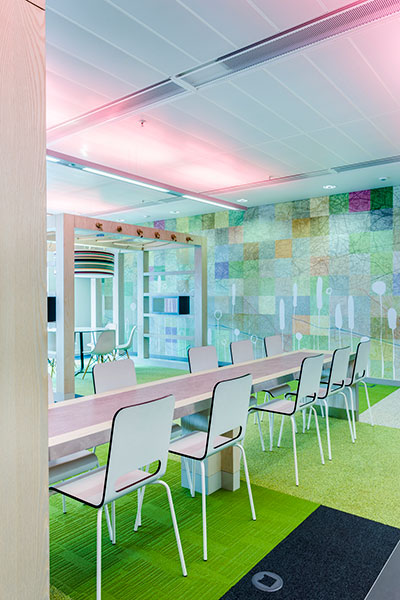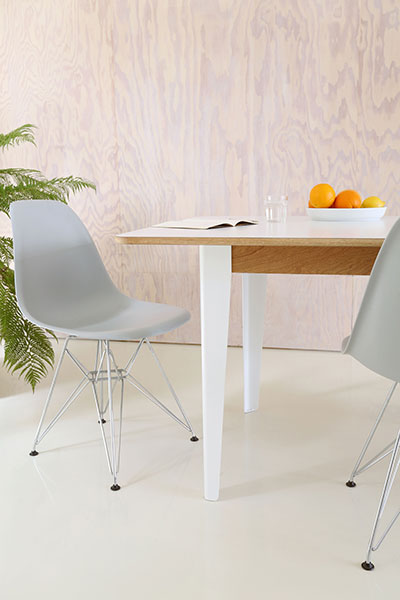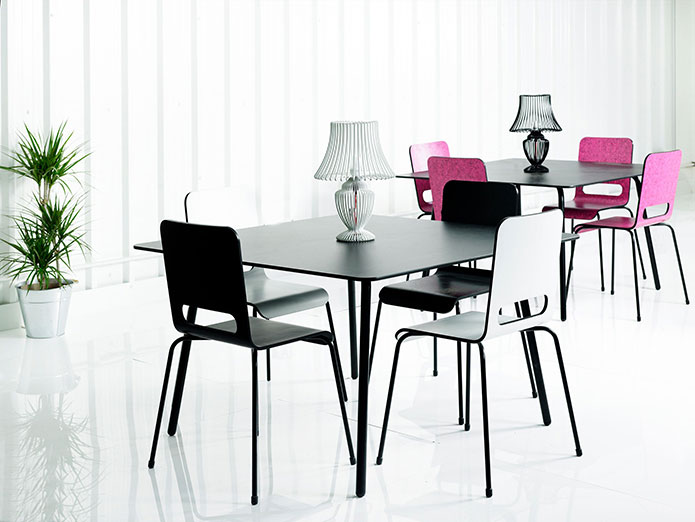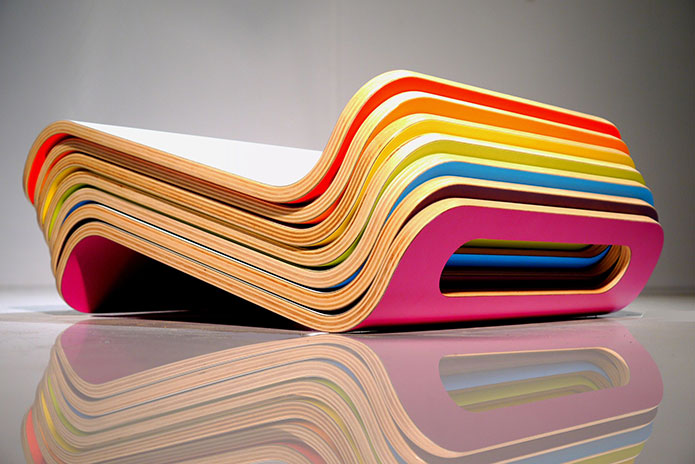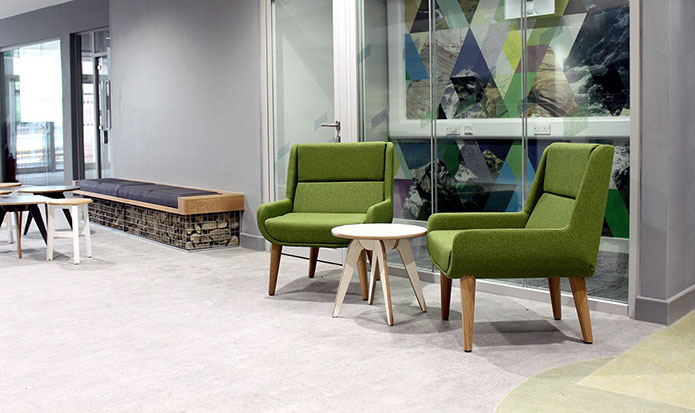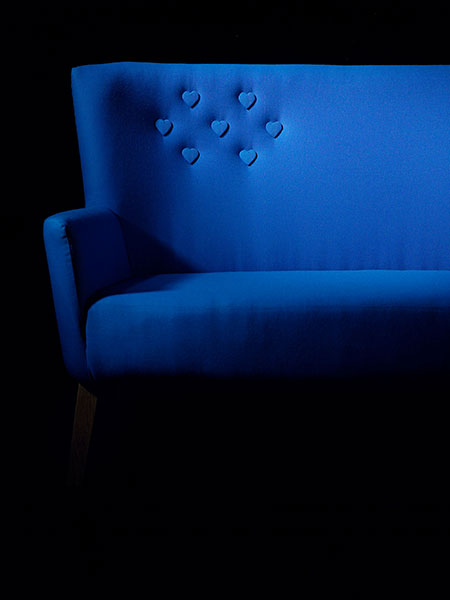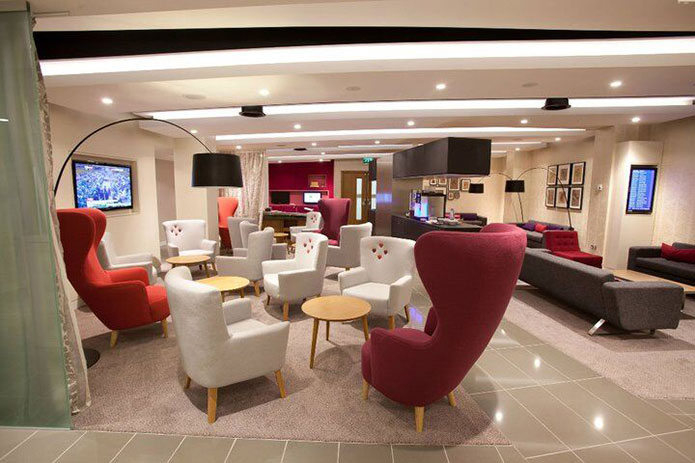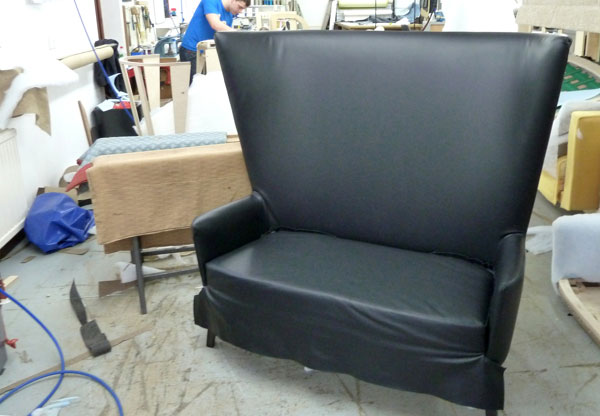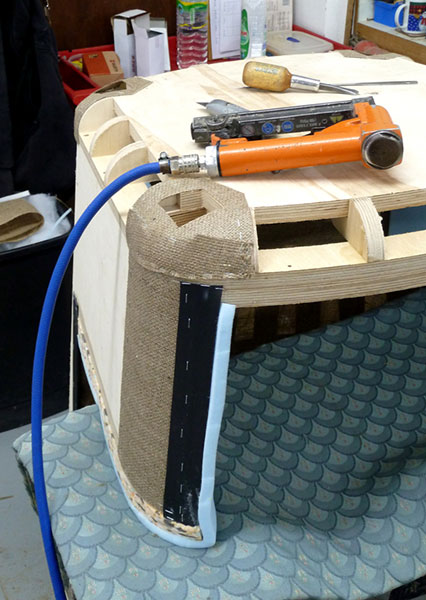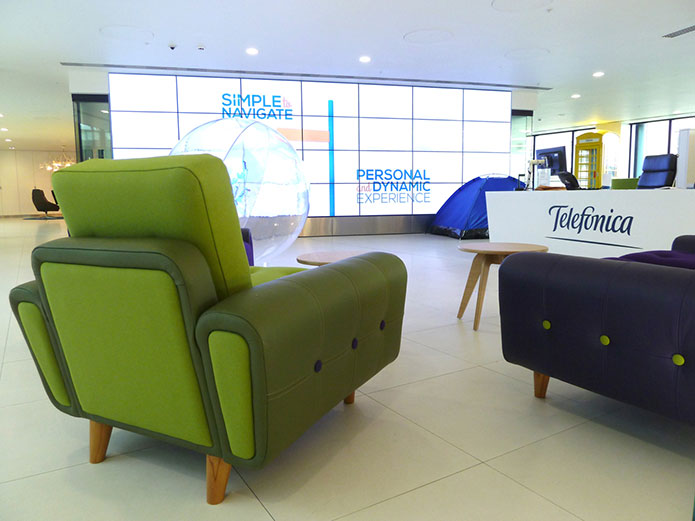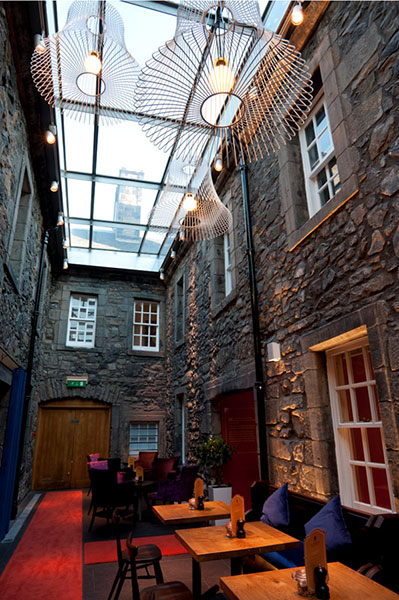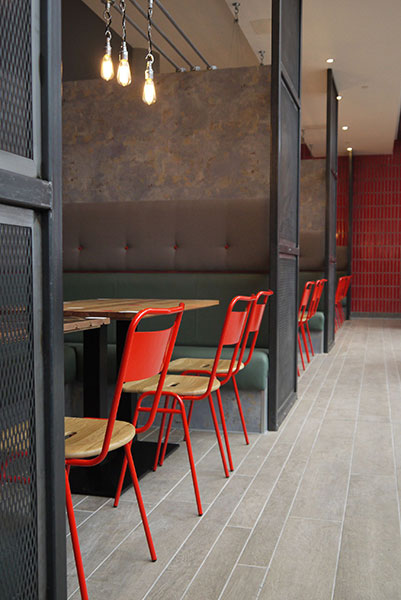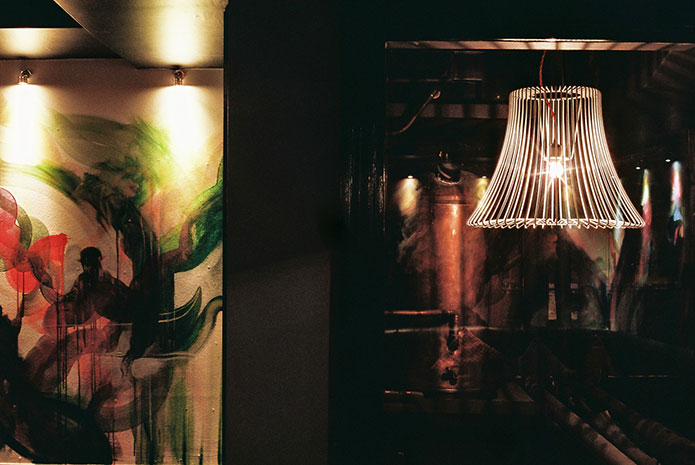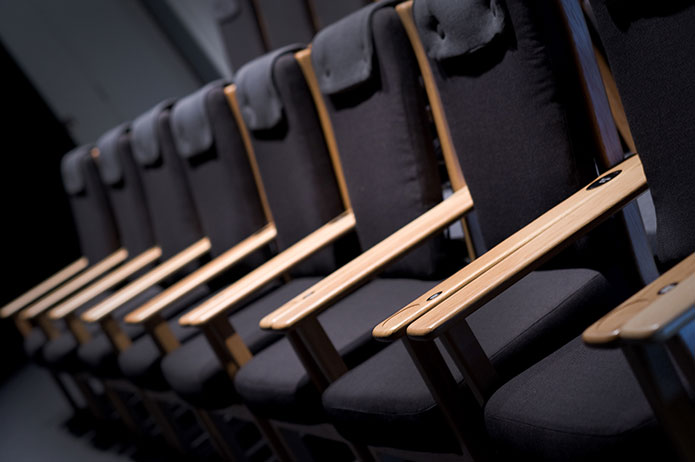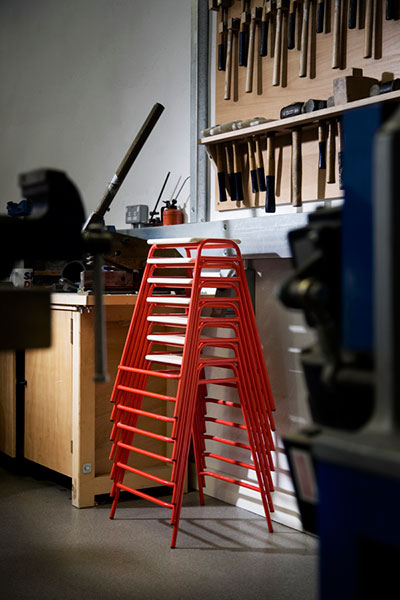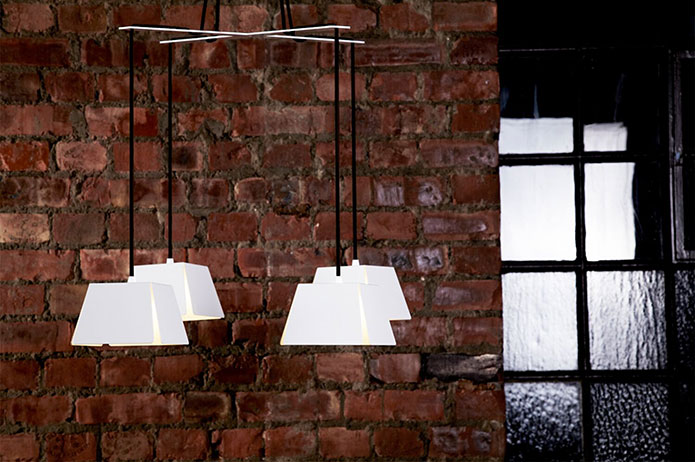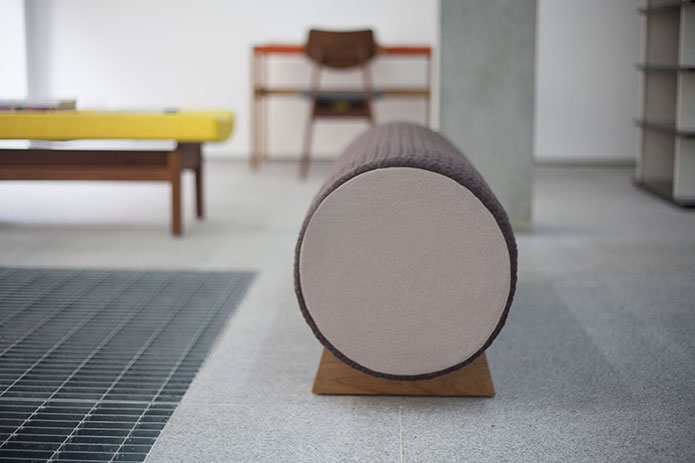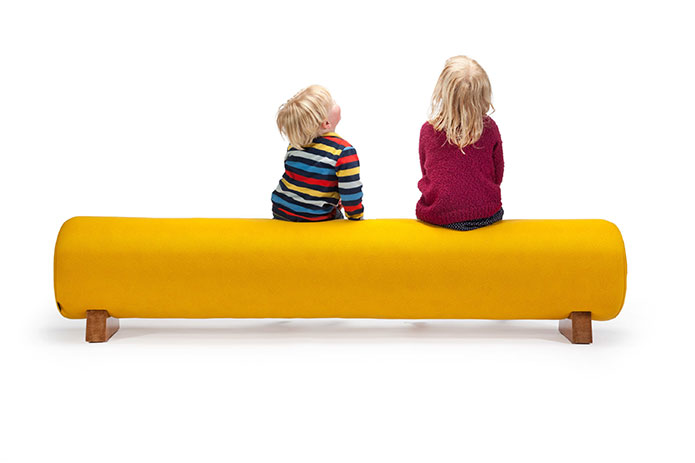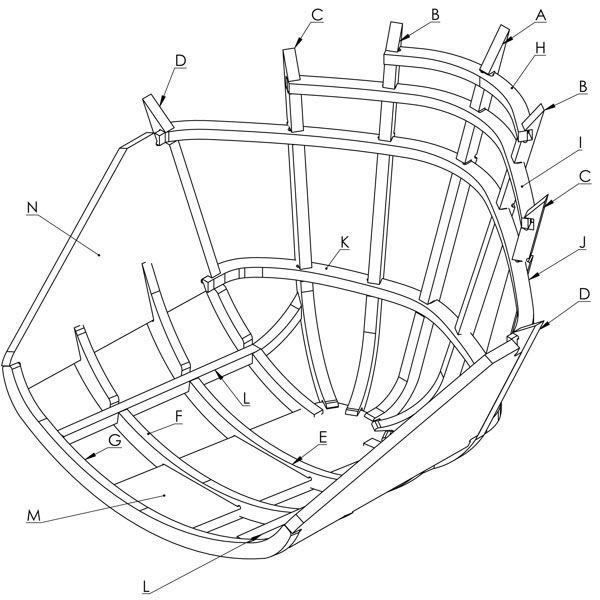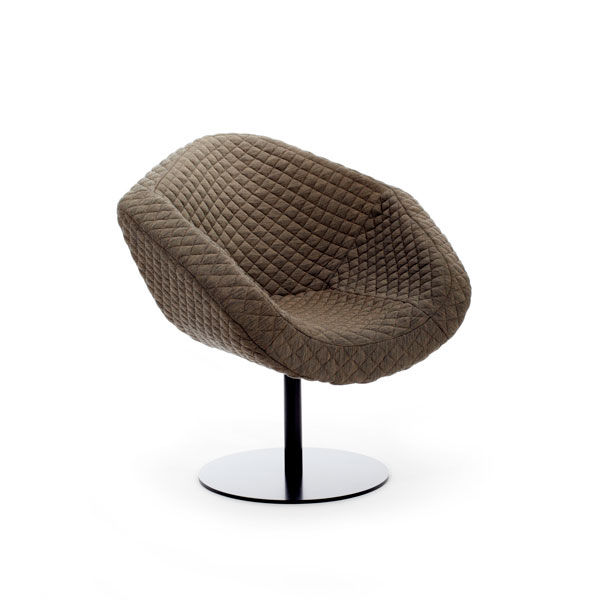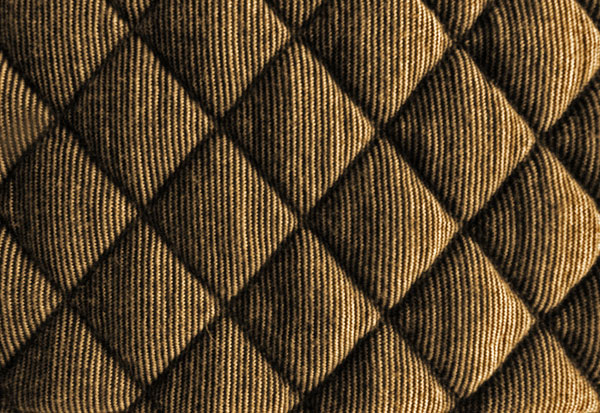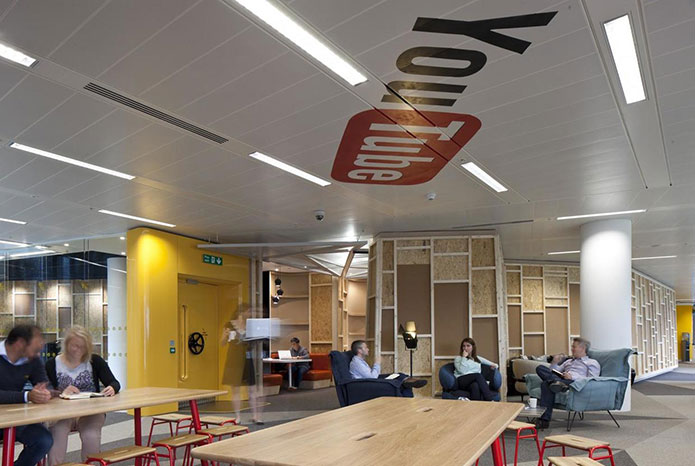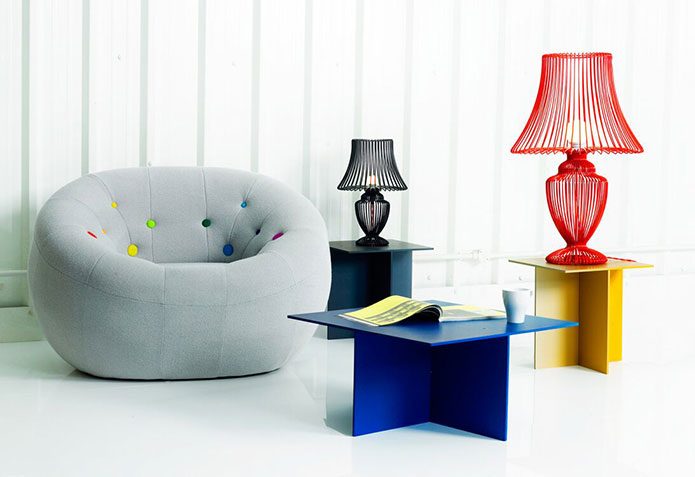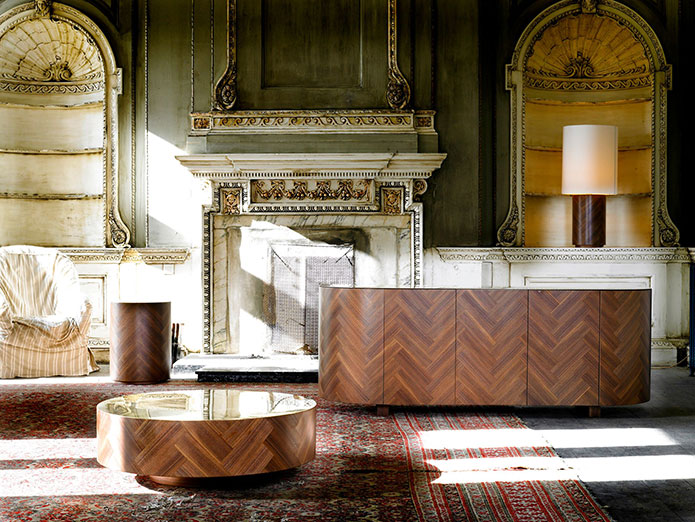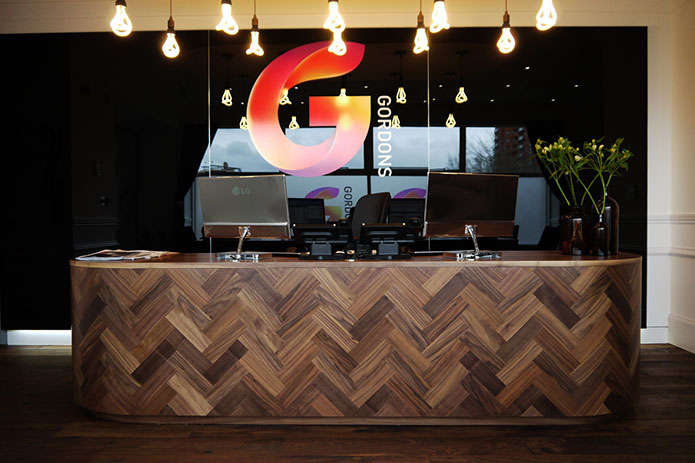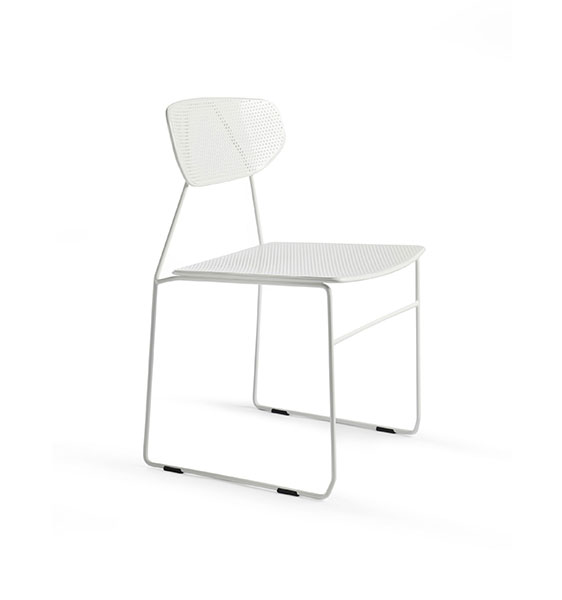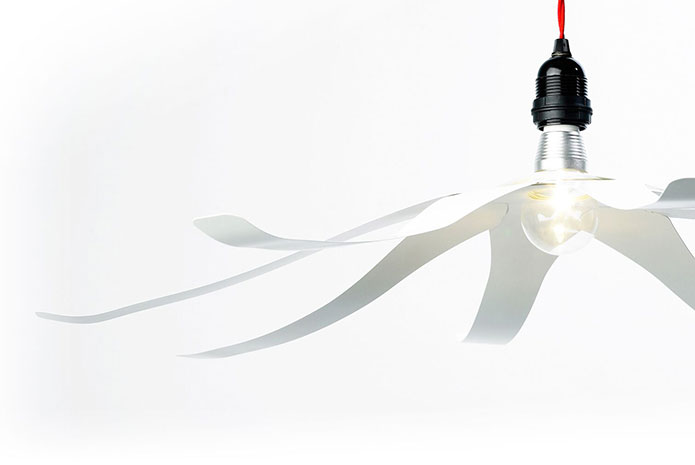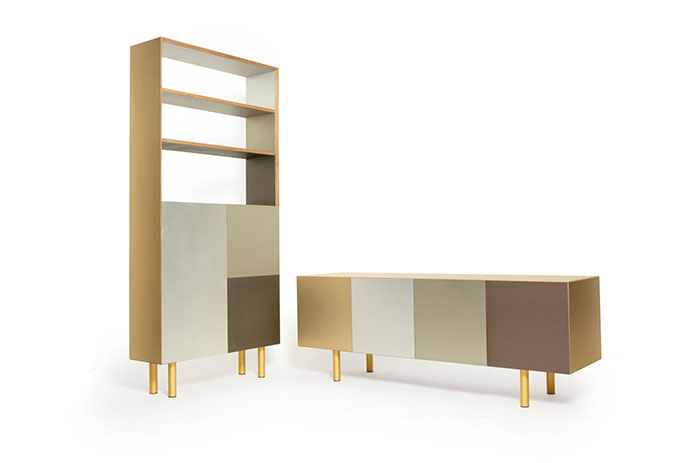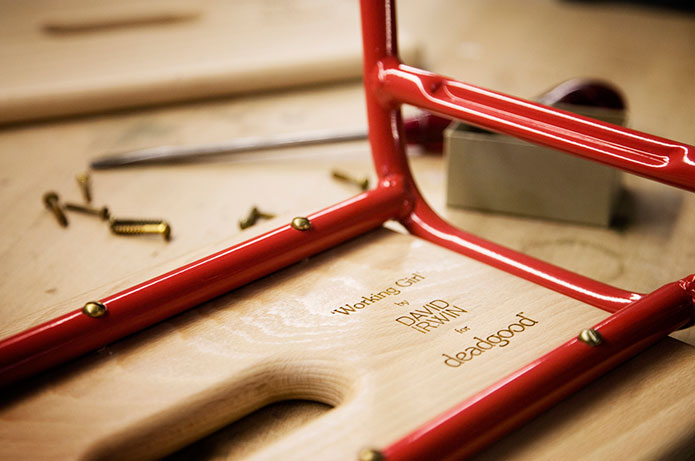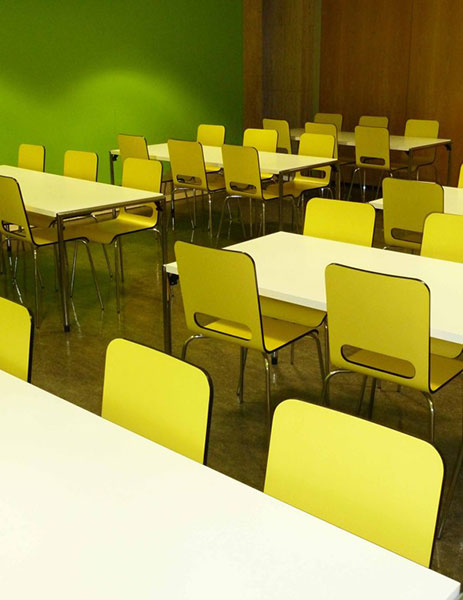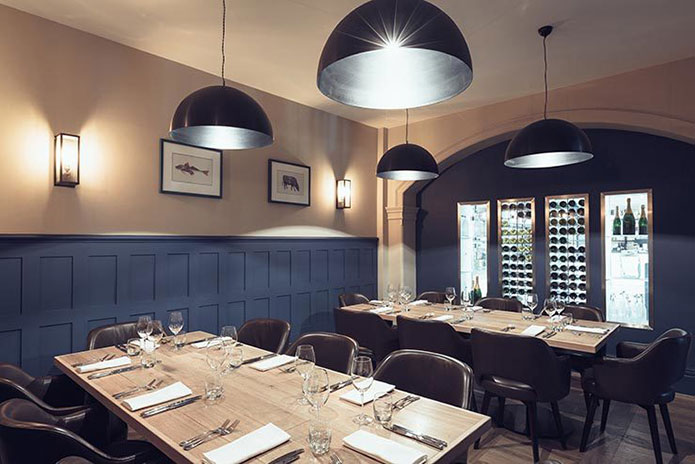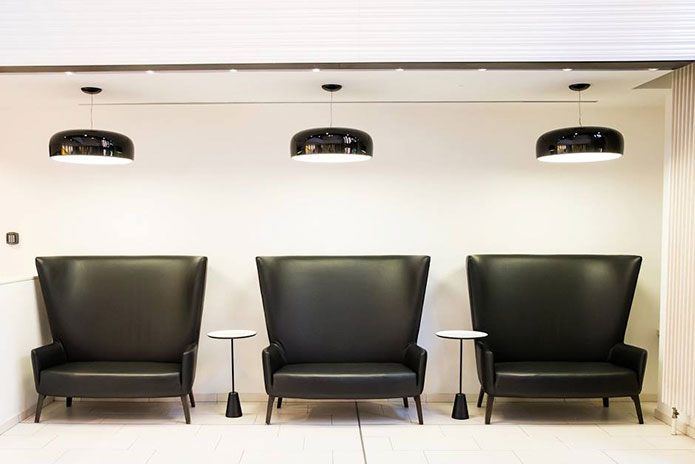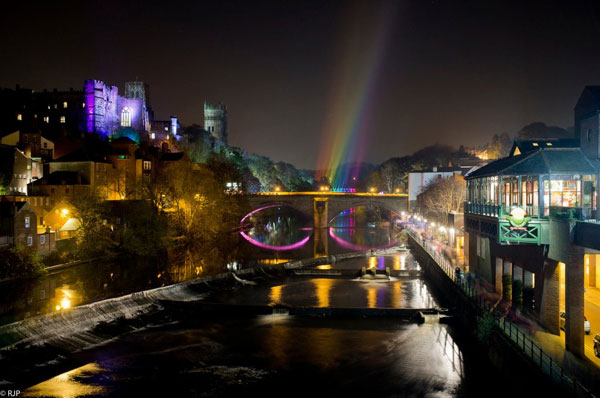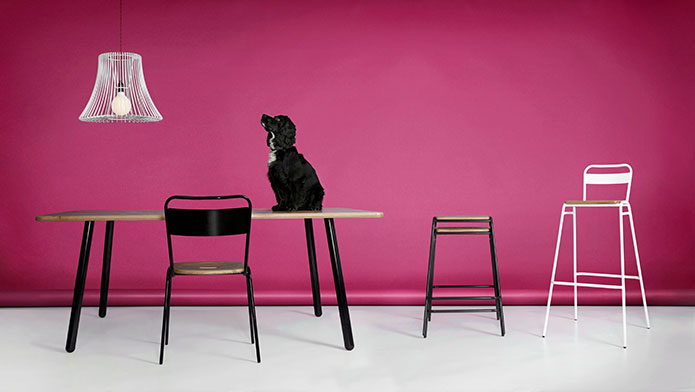
‘Working Girl’ Table & Chairs by David Irwin for Deadgood
That elusive ‘sweet-spot’ in any pursuit, is hard to find, hence its sweetness. But, once found, it feels or sounds or tastes or smells or, in award-winning Deadgood’s case, looks so good, it is just simply ‘right’. A decade on since conception by recent graduates, Deadgood has won numerous design awards and carved a very specific niche within contemporary furniture and lighting design & manufacture on an increasingly international scale. The secret to their specific ‘sweet-spot’ is the elusive combination of commercialism and creativity, in other words ‘products with personality’, something many designers fail to find.
The ambitious business gamble by founders Dan Ziglam and Elliot Brook has paid off, as establishing Deadgood immediately after graduating in 3-D design from Northumbria University in a harsh economic era, when even the most well-thought-through start-ups have floundered, the commitment, enthusiasm and an inherent seam of economic nous of these entrepreneurial novices has turned a small-scale provincial passion into a bold British brand, supplying the great and good of the design, hospitality, retail and education sectors; with clients including Barker & Stonehouse, Starbucks, Google, Yo Sushi, BBC, Ernst & Young, KPMG, News International and The National Gallery to name a few.
One part of Deadgood’s strength and subsequent success is a flair for marketing, as well as the essential original design spark and manufacturing know-how. The unapologetically British brand prides itself on its classic designs, with an eclectic edge and a typically British quirkiness and humour, resulting in cutting edge pieces which possess a distinct lack of pretence that surrounds some modern designs. Deadgood creates serious designs of both form and function, that are at the same time not taking themselves too seriously, not too ‘overly-earnest’, which can lead to a brand being simply too niche, too unapproachable.
Inspired by a multitude of influences; art, music, vintage and nature, another of Deadgood’s strengths is its ethos, at first borne out of necessity, later grounded in ethics, to work with British manufacturers and suppliers, which not only gives designs a true blend of Britishness, but also gives the brand the ability to be flexible, and to customise and collaborate. This British ‘brandedness’ gives Deadgood a cutting edge quality that distinguishes it in what is an extremely established and somewhat saturated sector.
A recent collaboration of great British design has been with Lee Broom (Designer of the Year, British Design Awards, 2011), and Deadgood are constantly seeking new designers to work with to create connections and synchronicity of ideas resulting in the Deadgood ‘family’ of like-mindedness. Deadgood have started to offer design consultancy advice as well as nurturing emerging talent from Northumbria University, with which they still have strong links, as a mark of loyalty to the place that launched them into what has become, with business developments in Dublin, Paris, Madrid and most recently Dubai, a true global brand.
Dan Ziglam now takes us through, in his own words, the rise of Deadgood…
Firstly, for those readers who aren’t familiar with Deadgood, please can you tell us what you do and how Deadgood came about?
We are a small British design and manufacturing company. We design, manufacture and distribute furniture and lighting accessories primarily for commercial environments and interior designers, and our products are found in high spec offices, cafes, bars, hotels, as well as for the contract market and some private residences.
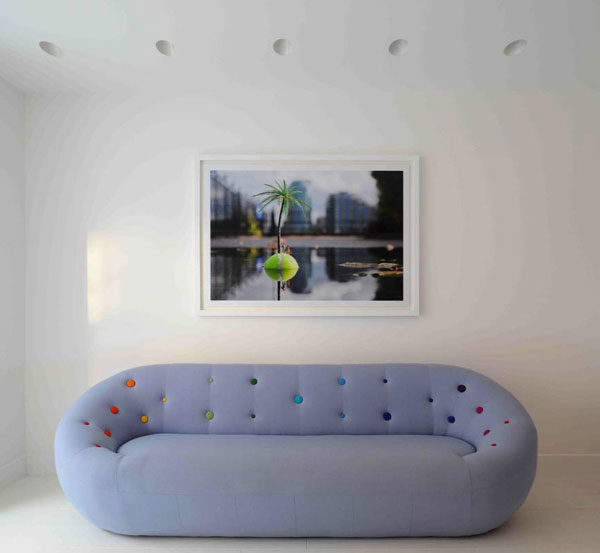
High end domestic interior by Studio Suss combining 3.5 seater ‘Capsule Sofa’ by Deadgood Studio in private residence with some Slinkachu and Damien Hirst artwork
Deadgood was started over 10 years ago by myself and Elliot Brook. We were furniture designers studying at Northumbria University in Newcastle, and as there weren’t many jobs available at the time of graduating, with a bit of naivety, and a lot of bravado, we started the business from one of the bedrooms of a flat we were renting in Newcastle using just one product from our Form Collection for the launch.
The Form Collection was an extension of my final year University project, where I worked with the company Formica, also based in Newcastle, to find a way of bending their Formica® compact laminate. We created a range of products using this material with clean lines in a huge array of colours – over 200 in total, many of them in bright pinks, yellows and blues – which we promoted in quite a different way to the norm. From this one solid idea we have been able to build the Deadgood brand, our range of products, team, supplier contacts etc, and have opened a London design studio in addition to our Newcastle office.
You’ve described your style as ‘Products with Personality’. Can you elaborate?
For our first ever business plan, we drew two overlapping circles, with the heading ‘Commercial’ on one side, and ‘Artistic/Creative’ on the other. We wanted to place ourselves right in the sweet spot in the middle. ‘Commercial’ is defined by durability, function, competitively priced etc, but we didn’t want to create bland products that are – or were then – associated with the commercial contract market.
Instead, we wanted to create products with a little bit of a twist, akin to a Paul Smith suit, which is very classic-looking on the outside, but the inside lining can be a bit ‘out there’. Like Paul Smith, we wanted our products to have a bit of a twist, showing our personality. Our products are very much an extension of our personality, not just mine and Elliot’s, but everyone who works here. As well as being reflected in our designs, our personality also encompasses how our products are promoted and the style of our imagery.
An example of this is our Love Chair, which is a fully upholstered lounge chair, very popular in libraries, universities, offices and airport lounges, and includes our trademark ‘Love Button’ detailing for a slightly eccentric tongue-in-cheek twist.
Why are you drawn to working with British manufacturers?
When we started Deadgood, we had to work with British manufacturers out of necessity, rather than any values-driven ethos, as the volume of our orders would have been too small for big overseas factories to manufacture for us in any case.
As we started working with British factories, we realised there were thousands of fantastic British manufacturers out there, from furniture to satellite manufacturers, all making great products. It was only then did it become our philosophy to work with British manufacturers and supporting the manufacturing industry that made this country great.
The main benefit of working with British companies, quite literally round the corner, is that it makes our design process so much more integrated, as our designers can easily visit the factory to talk through specifications, timescales and budgets, for instance. We have a two-way partnership with our suppliers, and they are like a family to us, and we feel there is so much more passion working with them.
It’s encouraging that with many tender projects now, there’s an emphasis on environmental considerations and criteria to source locally. We know that if we can outsource a project to a local factory, they will employ extra members of staff in Britain, and that is really helping people locally and makes a difference. As we get bigger, we will be sticking to our dedication to collaborating with British manufacturers.
Could you provide some insights into what inspires you and your design team, and who, or what, have been your creative influences?
We’re a very eclectic bunch and we all have different sources of inspiration. For me personally, I don’t look too closely at contemporary designers for inspiration; I’m more likely to get inspired by an old vintage sofa being chucked out in a skip, or scouring vintage shops, rather than purposefully going to design fairs for ideas.
Art and music also inspire me. Creatives, generally, influence me in different ways – a crazy sculpture at an art gallery, for instance, can give me inspiration both in form and use of materials. Having split offices in London and Newcastle has helped, as we now have two cities to reference from our daily interactions. It isn’t just urban environments, though; during a recent company away day we walked up Scafell Pike in Cumbria, England’s highest mountain, and we took inspiration from the shapes and textures of boulders, which we’ll be incorporating into new designs very soon.
Your style certainly appeals internationally, with a number of overseas installations for some prestigious clients, including royalty, in recent years. What is it about your style that overseas customers find so appealing?
We’re not intentionally marketing ourselves as having a British style, as it’s difficult to define what is ‘British style’ in any case. I like the description ‘consistently inconsistent is the British style’, and with so many influences and cultures in our country it’s not surprising we’re an eclectic mix-up of all sorts of things, with an added sense of humour.
If you look at other British creative exports, be it music, film or art, you can see that people internationally buy into that quirky sense of “Britishness”, and if designers can bottle that sense of Britishness and export it out, then I think they’re onto something. It’s what Paul Smith did when he went to Japan in his early career and it really made him. Deadgood have been organically, rather than intentionally, developing this theme, although not exclusively, as we’re also influenced by the clean lines and simple utilitarian styling of Scandinavian design, such as our Working Girl furniture collection, which interestingly has been very popular in Scandinavia itself, which is nice.
Newcastle-upon-Tyne seems like an unusual place to start an international design brand. What prompted you to locate your design studio there?
I guess it was out of necessity initially. Both Elliot and I had graduated from Northumbria University, and were living in Newcastle, and it made sense to base ourselves here after graduating as we already had contacts here, overheads were much cheaper than in other parts of the UK, especially London, and we found Newcastle to be a very easy city to create a network quickly. There was also more support locally, such as arranging business grants from regional development agencies. I also think it was an advantage to us initially from a positioning perspective as we were seen as slightly different, and ‘not just another design brand in London’. It’s difficult to know for certain, but things may not have happened the way it did for us had we started out in London instead of Newcastle at the outset.
That’s not to say we wanted to be defined as a purely Newcastle design company; at the outset we wanted to be an international business, and as London is an international city, it made sense to be here also so opening our London studio was a natural progression for us as we grew, but Newcastle will remain very important to us.
In terms of working as a creative duo with your co-founder Elliot Brook, who does what exactly?
Both Elliot and I class ourselves as joint CEOs and we share strategic decisions. Day-to-day, I deal with design, production, create and maintain contacts with suppliers, that sort of thing, but we share business development with clients, and it’s very much a fluid working relationship and a partnership.
Creatively, we try to get together as much as we can and pass ideas to the design team, but as the business grows, it’s difficult to do that, particularly as we’re working in split locations. In the past, when we were both based in Newcastle and sat next to each other every day, there were lengthy discussions about choosing colours for a design, for instance, but now I’m based in London, we don’t have time for that, and we have to be a lot more efficient, which I think has been a benefit.
Both you and Elliot are passionate about nurturing emerging talent. What advice do you have for other individuals that want to get in to furniture and lighting design?
Our industry, like a lot of industries, is rapidly changing. The traditional route used to be to design something, go to a manufacturer to get it produced and then market it, which could be quite expensive.
More recently there has been a renaissance in setting up businesses and it’s now so much easier with CNC cutting and 3D print technology, which means prototyping is far simpler, and there’s so many websites now making it easier for designers to market products, and barriers to entry are a lot less than they used to be.
I think designers will have to be more business savvy going forward. There’s lots of designers out there capable of making great things, but that’s only one part of it and they also need to be able to sell themselves and their products, and so they need to work to acquire these marketing skills. You have got to be able to sell your ideas, and if you don’t inherently know how to sell, you can’t market your business efficiently which can be very costly.
I also think collaborations are good for personal development. Many designers can be egotistical and think they can do it all themselves, whereas I think it’s a positive thing to work with other disciplines and genres – such as a furniture designer could also work on fabrics and textiles – and so building new skills and creating connections with different disciplines are essential in my opinion, rather than staying with the confines of a particular niche.
The three key attributes that all successful designers will need to demonstrate are: persistence, as it’s a long game and success won’t happen overnight; experimentation, and trying new things; and hard work, as what they’ll be embarking on will require a huge commitment from them.
You’ve come along way in the past 10 years. What do you want to achieve over the next ten?
For us, we feel we’ve just started and the past ten years has just been an apprenticeship and we’re only now ready to really get going!
We want to build collections, add classic designs, develop more collaborations, build an international brand, and put ourselves onto the world map as a global design brand, proudly British designed and made.
How did your collaborations with the likes of Lee Broom, Gala Wright and Magnus Long come about, and do you have plans to bring on board other designers in the future?
We definitely have plans for further collaborations, and they are key to our ethos.
It’s usually organic as to how they develop. Our collaboration with Lee Broom, for example, developed out of a meeting at a pop-up event at a fashion show where Lee was exhibiting, and as we got chatting we noticed in his sketch book he had created a similar idea to one we had thought of, and Elliot and I came to the conclusion that if Lee came up with that idea, he must be a ‘Deadgood person’. That meeting built into a friendship as well as a collaboration.
Generally, though, it’s chance meetings at shows where something catches your eye, chats at events that turn into meetings, and over a period of talking and seeing people a few times, it can create the basis for a collaboration. It’s a two-way thing, where people are as enthusiastic to work with us as we are with them.
How important is the choice and quality of materials in creating your furniture and lighting?
As a starting point, it’s probably the most important consideration for us. We’re targeting the high-end market, so robustness and quality of materials are imperative. Ultimately you pay for what you get, and we’d rather opt for a higher price to attain the quality that we aspire to.
We use an eclectic mix of materials – wood, metal, upholstery etc – and are constantly exploring new ideas. Early on, we sought out a diverse range of materials, and didn’t want to be typecast as a metal or wood design company. We like to keep the range fresh, and experiment with new materials.
In your early days, you used to sell via a network of retailers, but this is no longer the case and you’re now primarily selling via your online store and working closer with interior designers and architects. Why the change of focus?
When we first started out, we were testing out all sorts of markets, trying to do it all, including selling via retailers. When the recession came in mid-2008, retail got hit really hard, and we naturally felt it was right to move more to the commercial side. We found it made better sense to sell 100 hundred chairs for a particular project, than to sell to a shop that might only sell 4 chairs in the entire year.
As we work with British manufacturers, we’re set up so that it’s easy for us to customise products, which allows us to better service architects and interior designers who want the ability to customise designs, such as changing colours, for a specific project.
In recent years we found the commercial environment, especially in the professional services sector, such as law and accountancy firms, changed to become more domestic in style, and as that was our style, we were in the right place at the right time to capitalise on this. The business was there and we went for it and haven’t looked back.
You also provide consultancy services for creative projects. What sort of services do you provide?
We run a consultancy service for people that want us to design a collection for them. It’s not a main revenue stream for us, and it’s got to be something that will develop us, and allow us to learn new skills, such as working in new materials and applying different genres. It’s a vehicle to create exciting new projects, but it’s really quite limited, and we do tend to pick-and-choose what we work on.
Clients could be start-ups with new product ideas, established furniture brands that want a ‘Deadgood style’, to festivals – we developed a rainbow lighting sculpture for the UK’s largest lighting festival – Lumiere – in Durham a few years ago, attended by 100,000 visitors, which was very different and forced us to get really imaginative.
You’ve made a big impact in the design industry in a relatively short period of time. What do you put this success down to?
That’s a tricky one to answer as we want to remain humble about what we do. We’re passionate about making products, we love our work and we have a great team – very much like a family. If we include interns and suppliers, there are literally hundreds of people that have helped us over the years. It’s nice to make beautiful products in Britain, and I think that’s what people have bought into.
Thanks to Dan Ziglam for taking time out of his busy schedule to answer our questions.

